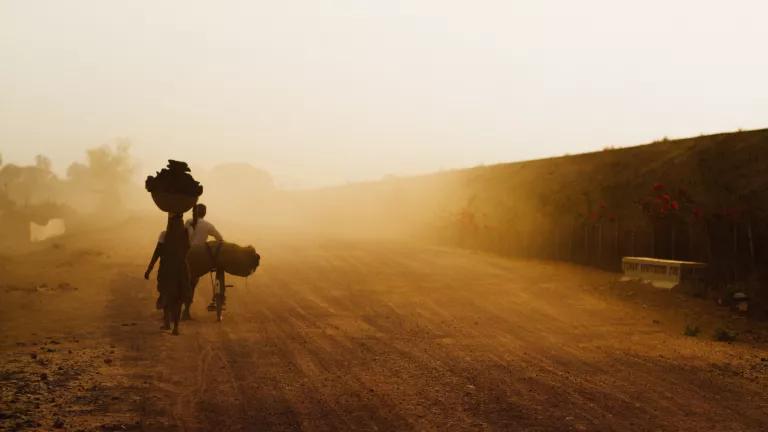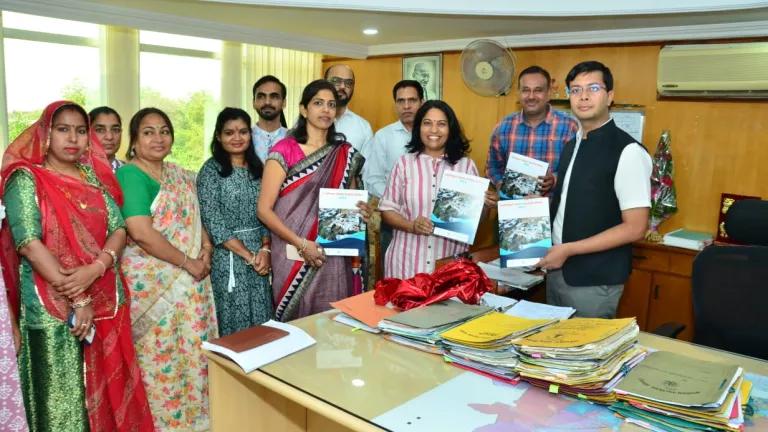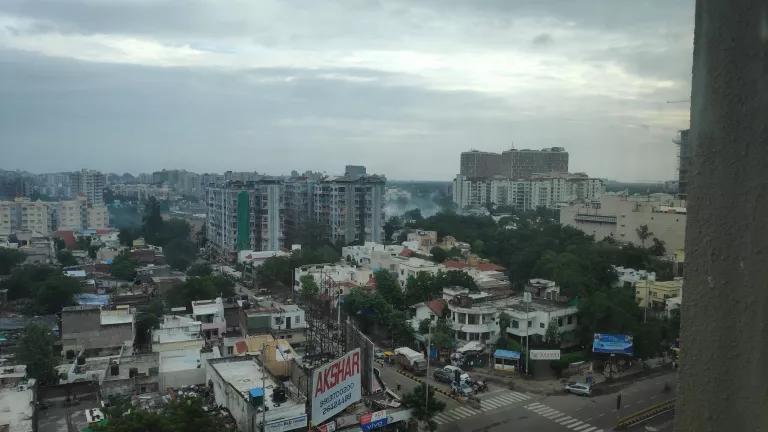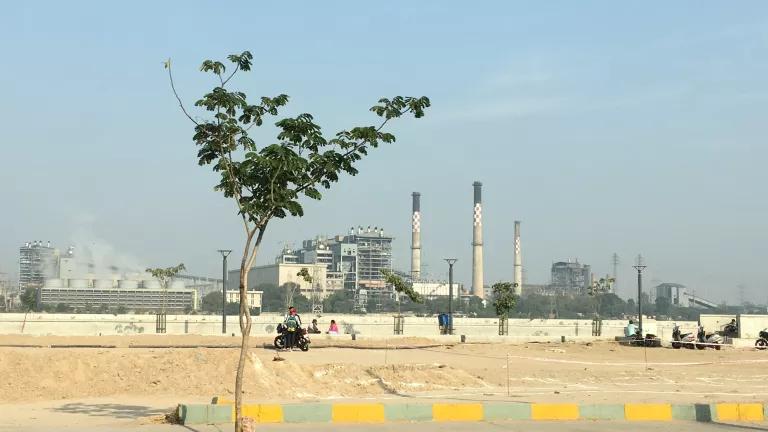A Clarion Call for Climate Change Adaptation
The new IPCC report, authored by 270 experts and scientists across 67 countries, identifies India as a country with one of the largest number of people vulnerable to climate impacts.

People walking down a dusty road in Chhatarpur, Madhya Pradesh, India
Adam Cohn via Flickr, CC-BY-NC-ND 4.0
The Intergovernmental Panel on Climate Change’s new report, “Climate Impacts, Adaptation and Vulnerability,” brings devastating news that human-induced global warming will have more far reaching impacts than we anticipated and has already pushed many of our “natural and human systems beyond their ability to adapt.” The new report, a comprehensive assessment of climate impacts, authored by 270 experts and scientists across 67 countries, identifies India as a country with one of the largest number of people vulnerable to climate impacts.
Key findings of the IPCC report for India:
- Heat and humidity in India could be impossible to survive. The report refers to wet-bulb temperatures, a measure that combines heat and humidity, in order to analyze safe temperatures for human life. (A wet-bulb temperature of 31°C is extremely unhealthy, and a temperature of 35°C is not survivable for more than about 6 hours, regardless of a person’s fitness level, health or access to shade.) While most of the country currently experiences maximum wet-bulb temperatures of 25-30 degrees, if emissions continue to rise, most of India will have wet-bulb temperatures of 31 degrees, with much of India at or past the survivable limit of 35 degrees, according to the report. At 1.5°C, Kolkata will regularly experience average heat conditions equivalent to the 2015 record heat waves.
- Increased Water and Food Scarcity. Climate change would add to water scarcity challenges in river basins around India such as Amu Darya, Indus, Ganges, as well as inter-state Sabarmati-river basin. India would also emerge as the one of the most vulnerable nations in terms of crop production. Price spikes are projected for the period 2015 to 2040 in all South Asian regions, with India, Pakistan and Sri Lanka predicted to witness increasingly much higher rice and wheat prices than under the baseline scenario. The report notes that rice production could decrease from 30 percent, and maize production could decrease up to 70 percent. Occurrence of pests, increasing temperatures, changing precipitation levels and increasing extreme weather events will further impact agricultural productivity. The projections are cause for major concerns over food affordability and food security. This will likely severely affect South Asian countries’ overall economic growth since they have mainly agriculture-driven economies.
- Increased Severe Weather Impacts. Already, India has been facing increasing and devastating severe weather impacts. These will only increase. India is already home to many people at risk due to sea level rise. According to the report, “around 35 million people in India could face annual coastal flooding [by mid-century], with 45-50 million at risk by the end of the century.” Just in Mumbai, sea level rise damages amount to US$49-50 billion by 2050 and could increase by a factor of 2.9 by 2070. According to global projections, fire risk will also increase in India in the Western Ghats and Eastern Himalayas under a range of scenarios. Regular, destructive heat waves, droughts, and landslides are also expected to increase.
- Increased exposure to carcinogenic toxins. In India, projected scenarios for the 2030s indicate potential increased malaria outbreaks; Europe, India, Africa and North America are all expected to see increases in Aflatoxin exposure; other carcinogenic toxins, such as those that come from cyanobacteria blooms, are expected to increase in frequency and distribution with climate change, with significant impacts on human health.
The time is now to do all we can do to reverse course on climate change and, at the same time, focus on building and strengthening adaptive capacity among the most vulnerable. Good work is already happening on resilience at the state and local level. Most states in India have developed heat action plans, cities are installing cool roofs, villages are implementing green village plans, and front-line communities are working towards adaptation and implementation of the tools they need to mitigate against climate change. Coordinated adaptation efforts such as Heat Action Plans cited in the IPCC report can alleviate adverse effects of extreme weather events.
A lot more needs to be done. Along with adaptation measures, we must also implement ambitious reductions in greenhouse gas emissions immediately. As the report warns, “with increased warming, the effectiveness of many adaptation options declines.” Climate change is a global problem, and as such, requires global solutions. India has been instrumental in establishing the Coalition for Disaster Resilient Infrastructure (CDRI), an international platform focused on disaster resilience, head quartered in Delhi, that can be an effective vehicle for countries to collaborate. Additionally, we need increased collaboration on investment in innovative green finance options, increased capacity building, and a committed, large-scale focus on equity. Globally and in India, worsening climate impacts will only compound the risks for the most vulnerable who have already been struggling for survival against the onslaught of multiple stressors, including climate, health, poverty, and social inequities. As NRDC president Manish Bapna said in a statement, “there are limits in the ability of people and nature to adapt and those most affected are vulnerable communities with the least resources to cope with the impacts of climate change. It’s time for action.”



